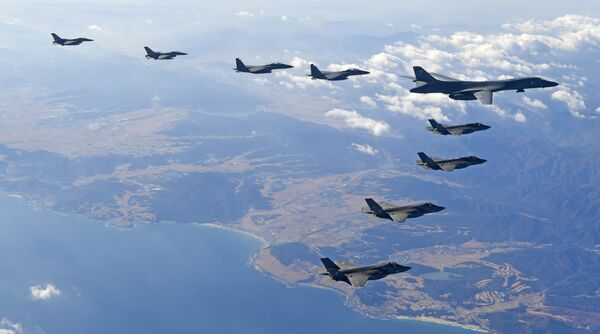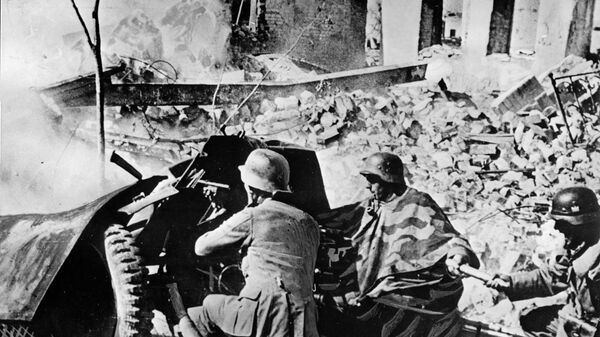The Wehrmacht commanders’ experience outmanoeuvring and destroying large French and Soviet formations is one that continues to be valuable in the age of artificial intelligence (AI) systems, which can help the US military make decisions quickly and efficiently for the conflicts of the future, Breaking Defense, a New York-based military affairs publication, has suggested.
In an article entitled “Making War a Software Problem: JAIC Director on JADC2,” contributor Sydney J. Freedberg Jr. recalled the studies of famed US military strategist and Air Force Col. John Boyd, who, the journalist recalled, “found that pilots who swiftly grasped the situation and adapted to it could consistently [shoot] down slower-thinking foes, even if the enemy planes were better”.
“The same principle, he realised, applies to entire armies. Witness the blitzkrieg years of World War II, when Nazi Germany had fewer and smaller tanks than its adversaries did but used them better, its tacticians outmanoeuvring large but slow-responding French and Soviet formations. So Boyd coined the influential concept of the OODA loop now widely used in military training: Observe the situation, Orient yourself to what matters, Decide what to do, and Act,” the contributor added.
Freedberg went on to quote Nand Mulchandani, chief technology officer at the Pentagon’s Joint Artificial Intelligence Center, who told Breaking Defense that the “decisive” factor of the US military’s future wars will be software, not “awesome hardware” such as new aircraft carriers, robot tanks, stealth bombers or laser weapons.
“The organisation that’s going to be victorious in the future is going to be the organisation [with] the maximum agility to bring out new capabilities and learn very, very quickly how to adapt,” Mulchandani said. “The speed at which you are able to change your tactics, change your planning, and react to changes your adversary is making is fundamentally where the game is going in the future – and the only way to take advantage of that…is to be more software-centric rather than being hardware-centric,” he added.
The former Silicon Valley bigwig emphasised that the Pentagon could take advantage of a transformation to the idea of ‘virtualisation’, to switch from a hardware-based approach to warfare to greater reliance on software and AI algorithms, including digital connections between physical military forces situated across vast distances, in order to optimise available information about things like where forces are located, their armament, levels of readiness, etc.
Freedberg emphasised the importance of the speedy provision and processing of information both on and off the battlefield, suggesting that in modern warfare, just as in World War II, “moving slowly is not just inefficient: it’s potentially deadly if you come up against an enemy who can react faster than you.”

The Pentagon’s new Joint All-Domain Command & Control concept is aimed at creating a loose meta-network capable of sharing all kinds of information across physical (land, sea, air, space) and digital (cyberspace) domains. According to Mulchandani, his office’s goal is to find ways to put the Pentagon’s “thousands and thousands” of sub-networks into a meta-network.
The official also walked back fears of a military-designed Terminator 2-style Skynet-like AI system which could destroy humanity, emphasising that “there are no autonomous weapons systems that we’re building”, and that “a huge amount of manual oversight and intervention on the decision-making process [and] things like targeting” will continue. “That’s not going to go away and we’re not trying to automate that away”, he stressed.
WWII Myths
Contrary to popular legends spread by retired German generals and Western historians during the Cold War, the Wehrmacht’s blitzkrieg strategy against the USSR in the opening stages of the war on the Eastern Front was not about the elimination of vast hordes of Red Army units by numerically inferior Wehrmacht and German allied forces. At the beginning of the war on June 22, 1941, the Red Army’s 3.2 million troops were actually outnumbered 1.3-1 by the Germans and their allies, and, worse yet, were caught off-guard, not fully mobilised, and failed to complete the process of strategic redeployment and entrenchment. Many of the forces were situated along the front, allowing the Nazis to attack and destroy vast quantities of aircraft, tanks and other equipment during the opening hours of the attack.
The rapid invasion of the USSR allowed the Germans and their allies to capture about 5.7 million prisoners of war; as many as 2.3 million of them later perished in Nazi concentration camps, according to famed archival historian Viktor Zemskov. However, the remaining Red Army formations, quickly beefed up by newly mobilised armies and by equipment, tanks and planes produced in factories evacuated to rear areas, were eventually able to halt the Nazi invasion, and then push Hitler’s armies out of the Soviet Union, into Eastern Europe and into Germany itself. According to University of Warwick economic historian Dr. Mark Harrison, one of the main factors to the USSR’s victory in the war against the Nazis was the Soviet economy’s ability to outproduce Germany and its allies and subjects in occupied Europe.




